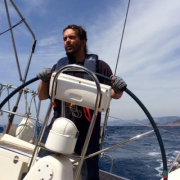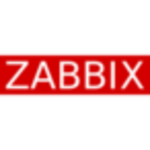We use AppDynamics Browser Real-User Monitoring to monitor the performance of applications. We use the solution to see the errors, snapshots, and exceptions in the backend and front end of our applications. We also use AppDynamics Browser Real-User Monitoring for frontend monitoring, end-user monitoring, checking the response time, and other frontend metrics. We also use the dashboard in AppDynamics Browser Real-User Monitoring and also use the solution for sending error or issue alerts to our clients.
The best feature of AppDynamics Browser Real-User Monitoring is that it lets you find errors in synthetic jobs ahead of the users. The solution shows you all front-end metrics. You can also see JavaScript errors and jQuery errors through AppDynamics Browser Real-User Monitoring. You can also do a correlation between the front end and the backend, or from the user to the navigator, to the backend through the solution.
What could be improved in AppDynamics Browser Real-User Monitoring is for the synthetic jobs or synthetic agents, in particular, you can't do a lot of tests with just one agent. You have to install a lot of agents if you want to do more tests, so this is an area for improvement in the solution.
Another area for improvement in AppDynamics Browser Real-User Monitoring is that you're only able to see basic metrics in the absence of server or database visibility.
For the SaaS version of AppDynamics Browser Real-User Monitoring, my team just downloaded then installed the extension in an application in Azure to see the application on the controller, so if this can be done in the on-premise version of the solution as well, without needing to install the agent on the machine, then it would make AppDynamics Browser Real-User Monitoring better. Currently, the .NET agent consumes the CPU or memory and clients usually raise this issue with my team, so it would be good if the on-premises version doesn't require agent installation on the machine.
Another functionality I'd like to see in the next release of AppDynamics Browser Real-User Monitoring is for it to receive updates from the file config without needing to reset IIS because right now when you do a modification in IIS, you have to restart IIS. When you add a service to the agent config, you have to restart IIS. For the product server, it's not possible to reset IIS after you make changes to the config file, so if this could be improved, then it would make AppDynamics Browser Real-User Monitoring a better solution.
I have about two years of experience with AppDynamics Browser Real-User Monitoring.
AppDynamics Browser Real-User Monitoring is a stable solution.
AppDynamics Browser Real-User Monitoring has good scalability.
Support for AppDynamics Browser Real-User Monitoring is always available. My team does a lot of Webex with support. Whenever you have a problem with the solution, you can always contact support.
As a developer, I have no idea about the pricing for AppDynamics Browser Real-User Monitoring. Another team is in charge of the licensing for the solution.
Currently, AppDynamics Browser Real-User Monitoring is deployed on-premises, but my team is also testing its SaaS version.
My advice to anyone considering AppDynamics Browser Real-User Monitoring is that it's a very important product because you can use it to troubleshoot and detect errors in your applications.
I'm rating AppDynamics Browser Real-User Monitoring as ten out of ten.























